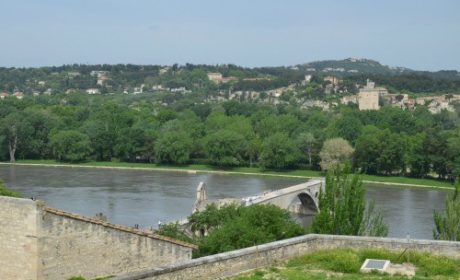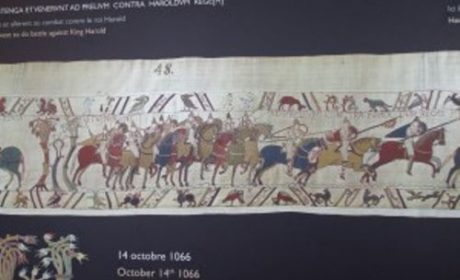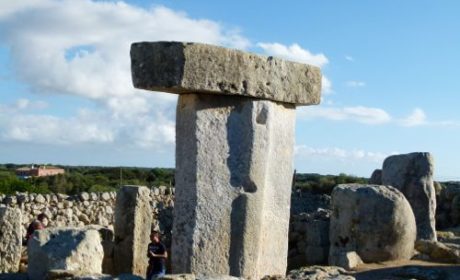Travelers looking for oodles of history and culture, not to mention culinary exquisiteness, will bask in all that France has to offer. From the ever-so-crowded Paris to smaller towns like Avignon or Perouges, travelers can really experience a variety of traditional French life as well as more modern customs. Today’s guest writer Jan Ross, from Wanderlust Wonder, takes us on a cultural tour of one of France’s most intriguing cities when we visit Lyon.

Lyon, like many French cities, is beautiful, charming, and historic. But it is truly unique in its location. Situated in east Central France between Paris and Marseilles, this UNESCO World Heritage site is located on a peninsula where two rivers, the Rhone and the Saone converge to the south of the historic city center. Because the city is located between two rivers, you can stroll east or west along cobblestone streets lined with lovely, local shops and restaurants, and end up on a river bank.
The city came by its famous nickname because of the popular lights festival called the Fete des Lumieres which occurs every December 8 and lasts for four days. The celebration is an homage to the Virgin May, who supposedly saved the city from a deadly plague in the Middle Ages. During the event, the entire city places candles in their windows and there are impressive large-scale light shows which are projected onto the sides of some of the most famous monuments.
Historically known for the production and weaving of silk, and more recently as a center of high tech industry, the city has also become known as a gastronomy capital. Part of the reason for this growing phenomenon is that two of France’s best wine region are located near Lyon; Beaujolais in the North and the Cotes du Rhone to the South. But another reason is the charming, local restaurants called bouchons where you can purchase a very economical meal of the local sausage with a special cheese dip which includes chopped herbs, shallots, spices, olive oil and vinegar called a cervelle de canut. Our guide assured us that a meal should not cost more than about 12 – 15 Euros and my husband and I found that to be true when we stopped for lunch. Many of the bouchons have outside dining and there is nothing like dining on a patio to feel totally French!

There is plenty to see in this walkable city but one of the most beautiful is the Basilica of Notre-dame de Fourviere which is located high above the city with an amazing view. We took a bus tour but there is also a funicular railway which runs up the hill and would provide a great view as you head up. Tickets are complementary, available at vending machines in the metro stations, and include transportation around the city on the metros, trams, and buses, as well as the funicular.
The basilica is truly beautiful, well worth a visit, and one of the most visited shrines in France. Located on Fourviere (literally, the “hill that prays”), the site has held a church of some kind since the early 1100’s. There are a variety of tours available, although the location is still a church with services so all visitors should be properly respectful when visiting.

From the top of the hill, you will also see the Tour Metallique which is a TV tower replicating the last stage of the Eiffel Tower which predates it by three years. Built between 1892 and 1894, it is not accessible to the public but still quite an interesting sight.
Back down in the city, the Place Bellecour is the third largest public square in France and is really amazing to see. We were surprised to see how much the parks in Lyon are used as, even on a weekday, they were full of families strolling and relaxing and having picnic lunches, bikers, skateboarders, and children running and playing. The area around the Place Bellecour is known for the narrow passageways called traboules which pass through building and link streets on either side. Large, ancient wooden doors link the passageways and our guide assured us that it was fine to open any door along the streets. If it was unlocked, anyone was free to pass through! The traboules are cool, airy, and many are open at the top to allow sunshine in the flowery courtyards of the apartments and homes which line the corridors.

The covered alleyways linked courtyards and homes to the river during medieval times, and allowed the silk weavers to transport goods without getting them wet. They are served as escape routes and hiding places during the German occupation. They are truly unusual and something every visitor should experience.
For those visitors interested in art, the murals of Lyon are truly spectacular. Created by a number of different artists including a group of students who started the phenomenon in the early 1970’s, there are more than 100 murals.

One of the most interesting things we saw during our time in Lyon was the astonishingly huge open-air swimming pool which is located on the Quai Claude Bernard right by the river Rhone. Part of a renovation project of the dock area, the pool area consists of a huge Olympic pool along with a smaller pool, a large area for children, lots of activities, and is it is also open to the public.
Whether you are interested in history, gastronomy, art, or just taking a dip in a river front pool, visit Lyon to experience it all!
Have you ever explored Lyon or are you planning to visit Lyon? Join the conversation at the My Itchy Travel Feet page on Facebook or send us an email to ask a question or share your experience.



